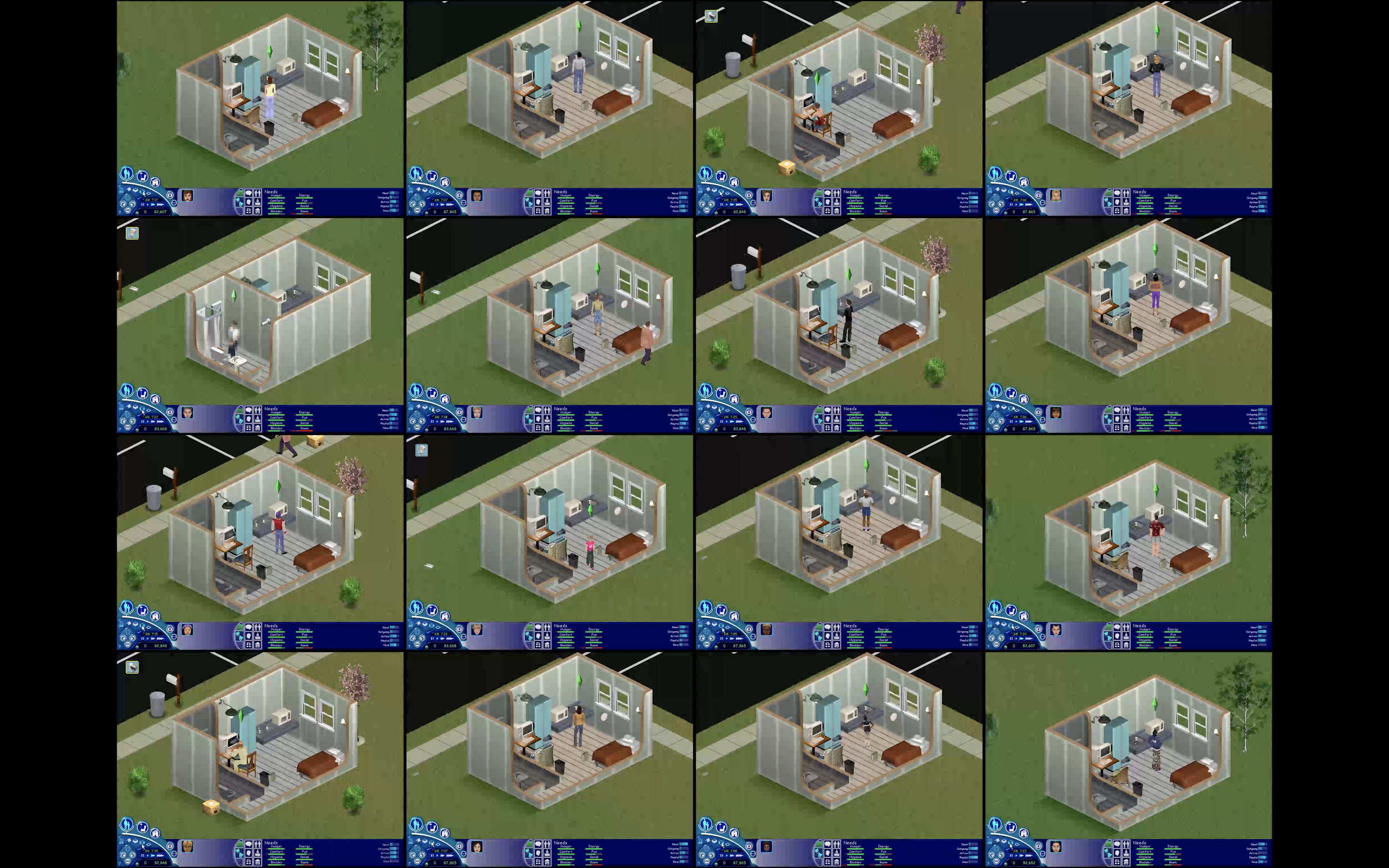Home
︎ Video Installation
︎ 36'53", 1920 x1080, son, color
︎ 2022 France
︎ Drawing on the gameplay experience of The Sims 1, the so-called "free man" is placed in a room with no exit within the game’s mechanics. While they are unable to leave, their basic living needs can still be met. I present this process through a real-time multi-screen live broadcast system. Released in 2000, The Sims 1 allows characters with distinct personalities to be freely controlled through user settings; yet, under the logic of the system, they inevitably accept a reality of surveillance and confinement.
As the sole passage between inside and outside, the concept of a "door" is never registered in the characters’ system of needs. Only under extreme conditions—such as the removal of all essential daily necessities—does the character respond by invoking an “output parameter,” a cry for help of sorts. However, this "output" is not a conscious manifestation of the will to escape, but rather a reactive mechanism triggered at the limits of the system.
On a certain level of reality, we are no longer merely players of the game, but, in a sense, the objects being simulated and reproduced by the logic of the program itself.
得益于《模拟人生1》的游戏经验,“自由人”被安置在一个在游戏机制中无出口的房间中。他们虽然无法离开,但基本生活需求仍能被满足。我通过一个实时多屏直播系统对这一过程进行展示。《模拟人生1》作为2000年发布的游戏,尽管角色拥有各自不同的性格特征并可以通过设定进行“自由”操控,但在系统逻辑下,他们始终接受着监控与禁闭的现实。
作为连接内外的唯一通道,“门”这一概念在角色的需求系统中从未被提出。只有在极端情境下——例如剥夺一切生活必需品——角色才会以调用“输出参数”的方式进行求救式表达。这种“输出”并非逃脱意愿的自觉展现,而更像是系统极限下的一种反应机制。
在某种现实层面,我们不再是游戏的玩家,而是在某种意义上,被程序逻辑所模拟、所再现的对象。
︎ Link︎︎︎
︎ Zone de confinement



